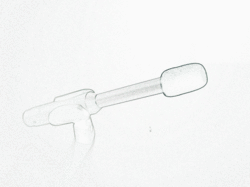Microphones
Transducer
Applications
- Telecommunication
- Consumer
- Multimedia and professional applications
Particularities
Microphones can be modeled at low frequencies by equivalent network comprising lumped elements with linear and nonlinear parameters. At higher frequencies, a model with distributed parameters is required. Due to the low mass of the diaphragm, the air has a significant influence on the mechanical vibration. Additional acoustical elements (cavities, ducts, damping material) are used to obtain a desired amplitude response.
The stiffness of the mechanical suspension and acoustical damping are the dominant causes of nonlinear distortion in most microphones. The nonlinearities of dynamic microphones can be identified by using an electrical excitation and by measuring the voltage and current at the terminals. A measurement performed in vacuum shows the mechanical elements without the influence of air load. Mechanical vibration measured by laser scanning techniques is the basis for modal analysis.
Critical Issues
- Internal noise
- Maximal peak SPL
- Flatness of the amplitude response on-axis
- Desired directivity
Accessories
- Microphones
- Sound Sources
Standards
American National Standards Institute
ANSI S3.7 Method for Coupler Calibration of Earphones
ANSI S3.22 Specification of Hearing Aid Characteristics
ANSI S3.25 Standard for an Occluded Ear Simulator
Institute of Electrical and Electronics Engineers
IEEE 269 Standard Methods for Measuring Transmission Performance of Analog and Digital telephone Sets, Handsets, and Headsets
IEEE 1329 Standard Method for Measuring Transmission Performance of Handsfree Telephone Sets
International Telecommunication Union
ITU-T Recommendation P.79 Telephone Transmission Quality, Measurements related to speech loudness

